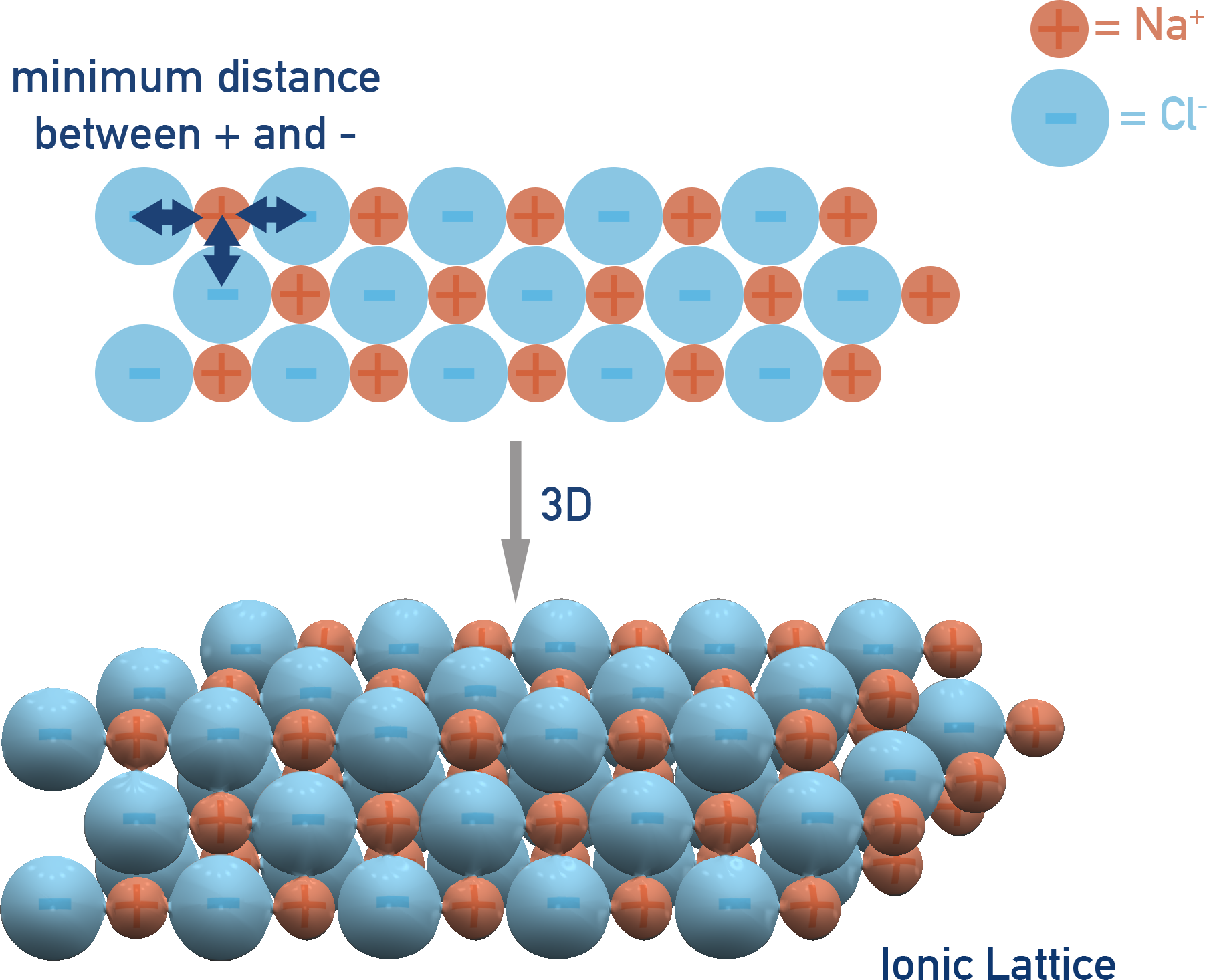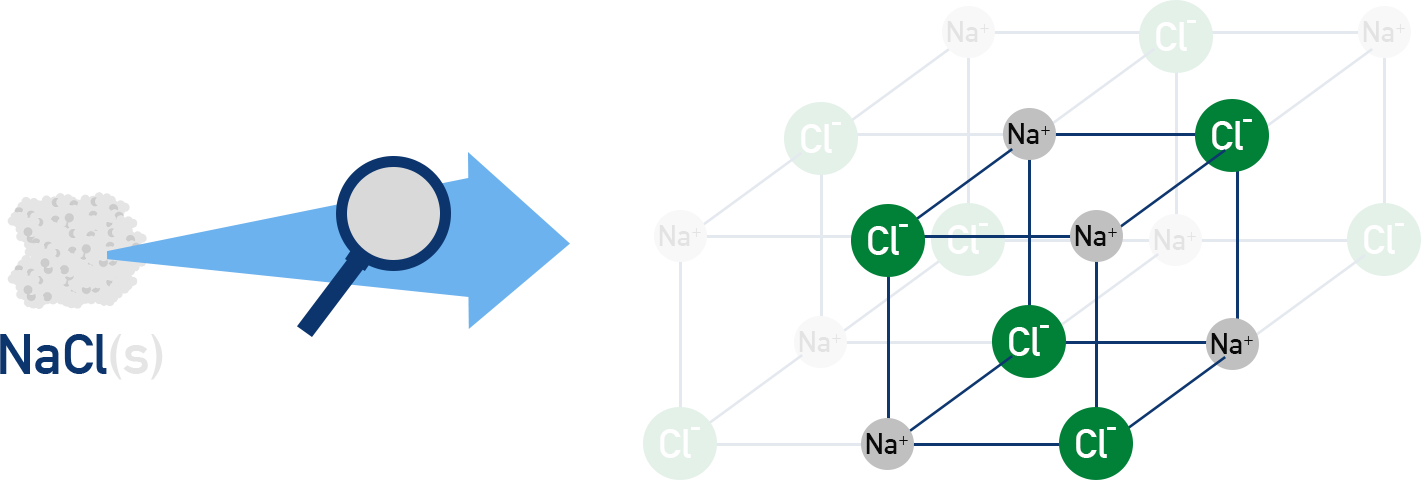Ionic Bonding
Quick Notes:
- Ionic bonding is the electrostatic attraction between oppositely charged ions.
- These ions form a giant ionic lattice.
- Ions are formed when atoms lose or gain electrons to achieve a full outer shell.
- You should know the charges of common ions, be able to write formulas for ionic compounds and use the Periodic Table to predict the charge on an ion based on its group.
Full Notes: Ionic Bonding
More detail on ionic bonding can be found here.
This page is just what you need to know for AQA A-level Chemistry :)
Formation of Ions
The most stable configuration for most atoms is to have eight electrons in their outermost shell (octet rule). Transition metals are an exception (see Transition Metals). Atoms can lose or gain electrons to achieve a full outer shell.
The position of an element in the periodic table can be used to predict the charge of its most common ion.

- Metals (Groups 1, 2, 3) usually lose electrons to form positive ions (cations):
- Group 1 → 1+ (e.g. Na+)
- Group 2 → 2+ (e.g. Mg2+)
- Group 3 → 3+ (e.g. Al3+)
- Non-metals (Groups 5, 6, 7) usually gain electrons to form negative ions (anions):
- Group 5 → 3− (e.g. N3−)
- Group 6 → 2− (e.g. O2−)
- Group 7 → 1− (e.g. Cl−)
Example: When sodium reacts with chlorine, ions form:

- Sodium (Na) loses 1 electron → Na+
- Chlorine (Cl) gains 1 electron → Cl−
- Na+ and Cl− combine to form NaCl
Ionic Bonding and Lattices
Oppositely charged ions are attracted by strong electrostatic forces and arrange themselves in solids in a regular 3D structure called a giant ionic lattice.
The closer opposite charges are in the lattice, the stronger the attraction. This is why ionic compounds have very high melting and boiling points.

Ionic compounds conduct electricity when molten or dissolved in water because ions are free to move.

Sometimes lattice structures are represented using unit cells with ions at the cube corners. 
Compound Ions
Some ions are made up of more than one atom, called compound (polyatomic) ions. The atoms are covalently bonded but carry an overall charge.
You must know the formulas and charges of these common ions:
| Ion | Formula | Charge |
|---|---|---|
| Ammonium | NH4+ | +1 |
| Nitrate | NO3− | −1 |
| Sulfate | SO42− | −2 |
| Hydroxide | OH− | −1 |
| Carbonate | CO32− | −2 |
Constructing Ionic Formulas
The formula of an ionic compound shows the simplest ratio of ions that balances the overall charge to zero.
To derive an ionic formula:
- Write the symbols and charges of the ions.
- Balance the charges so total = 0.
- Use subscripts to show the number of each ion.
- Use brackets for compound ions if more than one is needed.
- Magnesium chloride: Mg2+ + Cl− → MgCl2
- Aluminium oxide: 2Al3+ + 3O2− → Al2O3
- Calcium nitrate: Ca2+ + 2NO3− → Ca(NO3)2
- Ammonium sulfate: 2NH4+ + SO42− → (NH4)2SO4
Summary
- Ionic bonding = electrostatic attraction between oppositely charged ions.
- Ions form by electron transfer to achieve stable electron configurations.
- Ionic compounds form giant lattices which have high melting/boiling points and can conduct electricity when molten or dissolved.
- Compound ions exist (NH4+, NO3−, SO42−, OH−, CO32−).
- Formulas are constructed by balancing charges until overall = 0.
